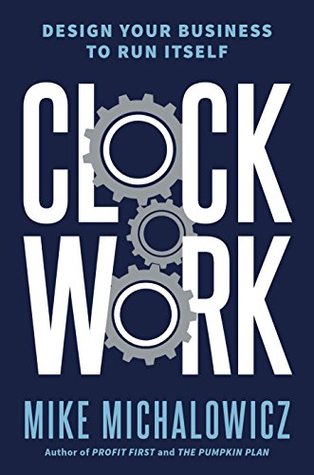More on this book
Community
Kindle Notes & Highlights
How you allocate your business’s time between the Doing, Deciding, Delegating, and Designing functions is called your 4D Mix, and getting it in the right proportions is crucial to helping your business run itself.
The optimal 4D Mix is when the business spends 80 percent of its time Doing, 2 percent of the time making Decisions for others, 8 percent of the time Delegating outcomes, and 10 percent of the time being Designed for greater efficiency, better results, and less cost in the process.
Your primary focus is to design the flow of work through your company so that other people and other things can get the work done. Commit to putting your company’s output first and your productivity second. How do you do this? Simple . . . you will find better answers when you ask better questions. Stop asking “How do I get more done?” and start asking, “What are the most important things to get done?” and “Who will get this work done?”
Doing: This is the phase when you do everything yourself.
Deciding: In this phase, you assign tasks to other people.
Delegating: In this phase, you’re able to assign the task to an employee as well as empower them to make decisions about executing that task.
Designing: This is when you work on the ever-evolving vision for your company and the flow of the business to support that vision.
Scott explained that the delegating is a process. “First, you assign a task. Then you assign the responsibility. Then you ask them to own the results. Finally, you ask them to own the outcome, which is repeated results over time.”
The ideal mix for a company is 80 percent (Doing), 2 percent (Deciding), 8 percent (Delegating), and 10 percent (Designing).
Trash, Transfer, or Trim:
Are you 1) communicating (speaking or writing), 2) making a physical action (moving something), or 3) interacting with something (working on the PC, pushing keys on the cash register)?
Every company must consistently complete four major stages in order to keep itself in business. The business must: Attract—Bring in new prospects interested in the company’s offering. Convert—Turn a portion of those prospects into customers. Deliver—Supply the customers with the product or service as promised. Collect—Ensure that the money promised by the customers is gathered.
SAMPLE SYSTEM DIRECTORY STRUCTURE SYSTEMS Attract Website Email Marketing Convert Website Email Marketing Deliver Shipping Admin Reporting Analysis Collect Accounting
You want to hire people with a great get-it-done attitude, high energy, and high intelligence, people who are a strong cultural fit and who have a desire to do the work you need done. All these are intangibles that can’t be taught. Either they have it or they don’t. So seek out people who have the intangibles you need, then give them the only thing that you really can: the skills.
When looking for new team members, seek diversity.
The first step in aligning your team is understanding your (and, by extension, your business’s) soul. What is your purpose? Your corporate mission? Purpose is the intersection of something that gives you joy and has a positive impact on others.
When you have a corporate mission, speak about it often and in different ways, inside and outside the company.
The reason you need to be clear about your mission is to be sure you have the right people working for you before moving them into the right roles.
People are not their titles. People are their strongest trait.
For a business to stay afloat and grow, it must be actively Doing things that its clients value.
The Commitment is an extremely simple, yet powerful, declarative strategy that involves clarifying whom you serve and how you serve them. Notice I didn’t say “identifying” whom you serve and how you serve them.
Once you clarify who and how, you must commit to that group, which is why this crucial step is called Make the Commitment.
the QBR was customer support.
For a business to run like clockwork, you must have consistent delivery of your offering. You need to have a predictable process that yields a predictable output, and to do that you must reduce variability.
The acid test for the whom of your commitment is whether they have established congregation points and you can achieve consistent access to them.
A congregation point is a consistent presence to learn and share,
asked himself what distinct elements about his favorite customer were also something that people formed communities around.


